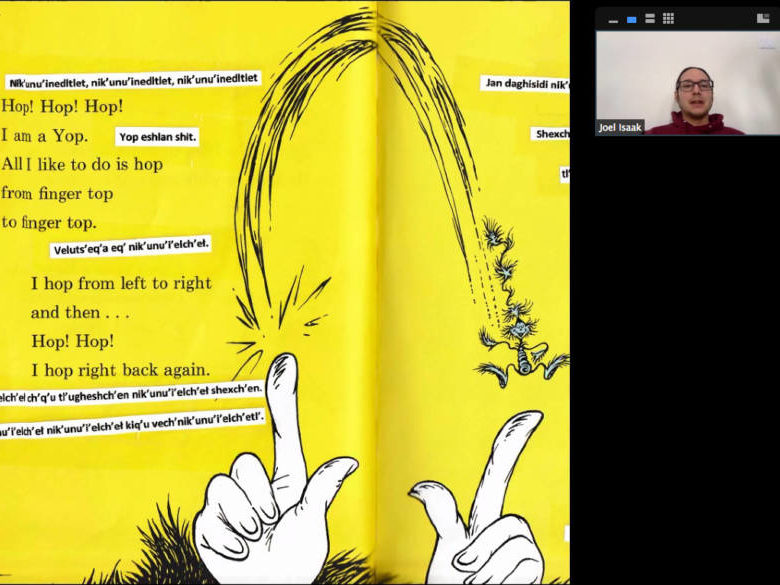
When it comes to stories, it’s not just what you say — it’s how you say it.
Local linguists in the Kenai Peninsula are incorporating storytelling into their language revitalization efforts, giving elders a chance to create and tell stories in their Native languages and imparting that knowledge onto language learners.
Joel Isaak, an artist and Dena’ina language professor with Kenai Peninsula College, spoke about the project at Tuesday’s Alaska Native Studies Symposia, put on by the University of Alaska Anchorage.
He said a major key of the project is that elders should drive the language work.
“And Dena’ina, we have a very few number of first language speakers, around five or six,” he said. “And so what we’ve striven to do is surround the elder we’re working with with the support she needs and we need her to be able to be speaking every day. And for us as language learners that aren’t as proficient, this gives her a way to talk with us and for us to listen, and also a structure for how to teach students who want to learn language, as well.”
Dena’ina is a highly endangered language. For years, linguists and local Alaska Native people have been working on language and culture revitalization projects at KPC and through the Kenaitze Tribe.
Isaak apprentices with Helen Dick, a Dena’ina elder. Since COVID-19 hit, they’ve been Zoom-ing daily to record Dena’ina stories.
At first, they were translating work from English to Dena’ina.
“When we were first starting off the project, we were trying to figure out, ‘How do we develop resources?’ And so we started out with the Dr. Suess, ‘One Fish, Two Fish, Red Fish, Blue Fish,’” Isaak said.
“And when we were doing this, I came across the verb, ‘to hop,’ which is, ‘nik’unu’inedltlet,’” he added. “And that led us into a series of books that we would do,”
They ended up creating a series of stories about a fictional Dena’ina girl, whose name is Niku because she loves to hop. Some of their early stories had to do with animals.
“And through this process of working with our elders, we realized that the anamorphic kind of Berenstain Bear, or talking animals, and the playful Dr. Suess, early-Western literature method is not how we talk about language in Dena’ina,” Isaak said.
Now, they’re creating stories based on prompts, like Niku going to the store with her family or having a potlatch.
“For example, the berry picking story,” he said. “You would tell that story when you’re out berry picking. But when you’re sitting in an office, in Kenai and it’s winter and you’re not out berry picking, it’s hard to do that kind of story creation. And so when we’re telling the story about berry picking, then Helen’s able to tell the traditional story that you would say in that context.”
Some of the stories are ones Dick will tell about her own experiences.
“It gives the framework to be able to talk about the things that we do in our lives,” Isaak said. “So every day, we’re recording these stories based around what’s happening in our lives.”
They’ve amassed hundreds of stories and keep track of them in a table of contents, accompanied by detailed notes. They also work on breaking the pieces down and analyzing their grammar.
“We’re trying to not just take English syntax structure and put it into Dena’ina. We want it to be Dena’ina,” Isaak said.
He said those cultural components are instrumental to their revitalization effort.
“A big part of our language work is, ‘Where does language come from?’ Language is a response to place, it’s the form of communication, so this is why we have to do the language with the culture,” he said. “They’re not separate.”
Isaak said they’re working on compiling texts for a storybook for children and early language learners. They’re also compiling pieces on an interactive website.
You can watch the symposium in its entirety on the Alaska Native Studies Facebook page.




